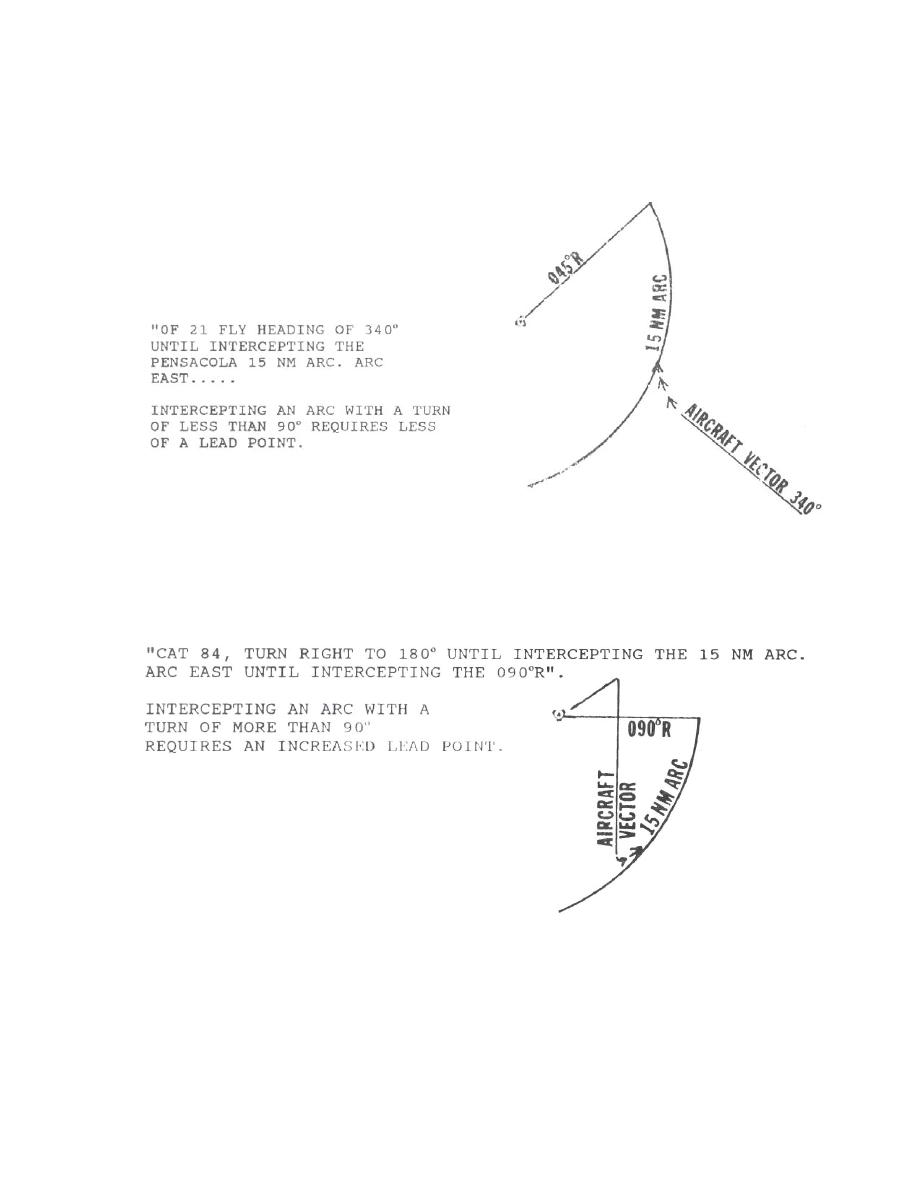 |
|||
|
|
|||
|
|
|||
| ||||||||||
|
|  INSTRUMENT NAVIGATION
There will be times when you will transition to an arc requiring a turn of less or more than
90. If your initial turn onto an arc requires a turn of less than 90, your lead point
will have to be decreased. If your turn to transition on an arc is going to require a turn of
approximately 45, your lead would be approximately one-half of your normal lead. (Figure 6)
Figure 6
The same is true for a required turn of more than 90. You would increase your lead by a
relative factor. Again, wind and ground speed would be factors in your analysis. You may
experience this situation when flying a vector assigned to you by a controlling agency. (Figure 7)
Figure 7
To intercept an arc from a radial, a turn of approximately 90 is required to place the head of
the #2 needle on the wing tip with a DME indication equal to the desired arc. Determine the
direction to turn and the desired lead point. Initiate the turn when the DME is equal to the radius
of the arc plus or minus the desired lead. During the last 30 of turn, monitor the head of the #2
TACAN POINT-TO-POINT 4-5
|
|
Privacy Statement - Press Release - Copyright Information. - Contact Us |